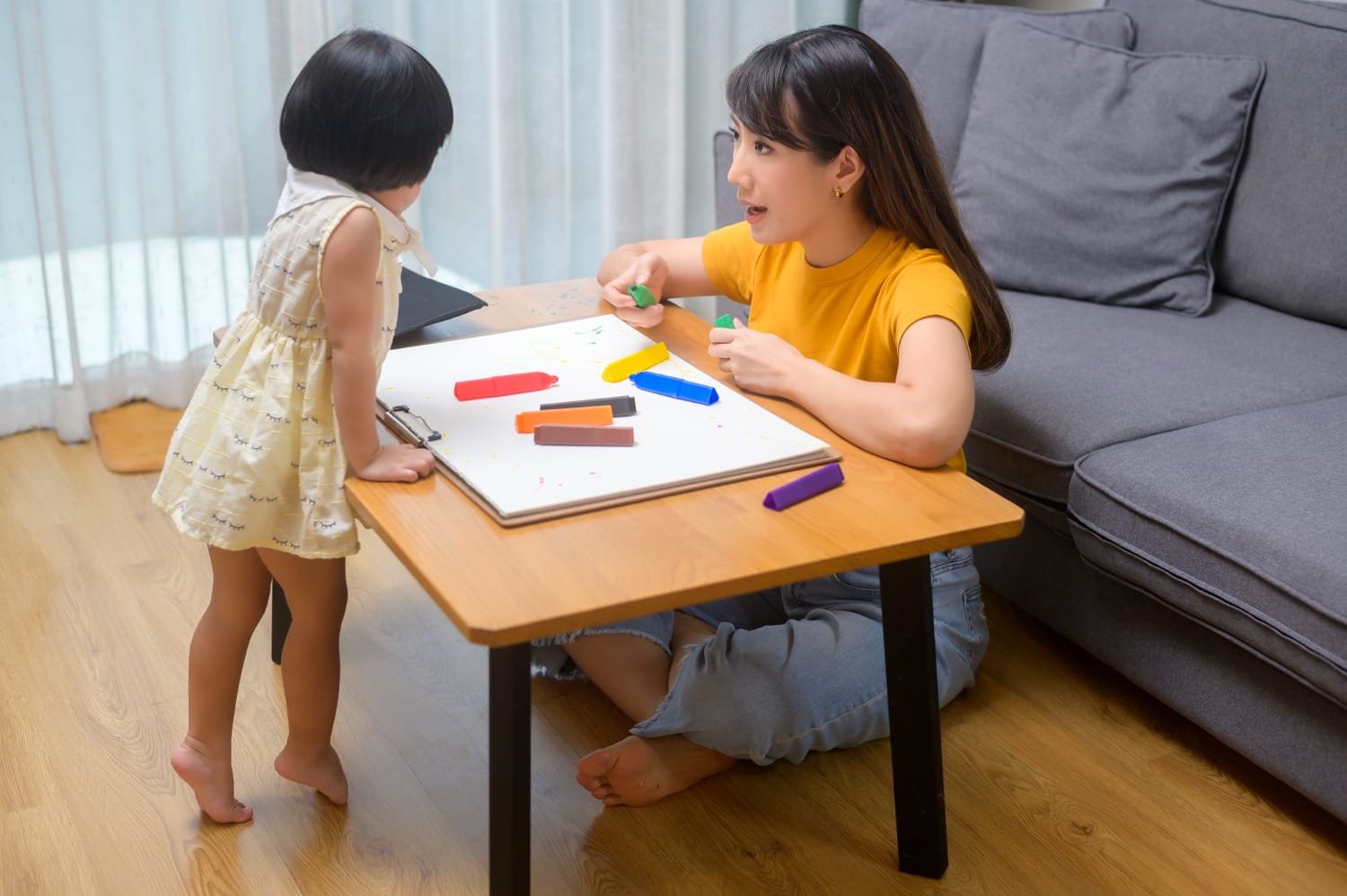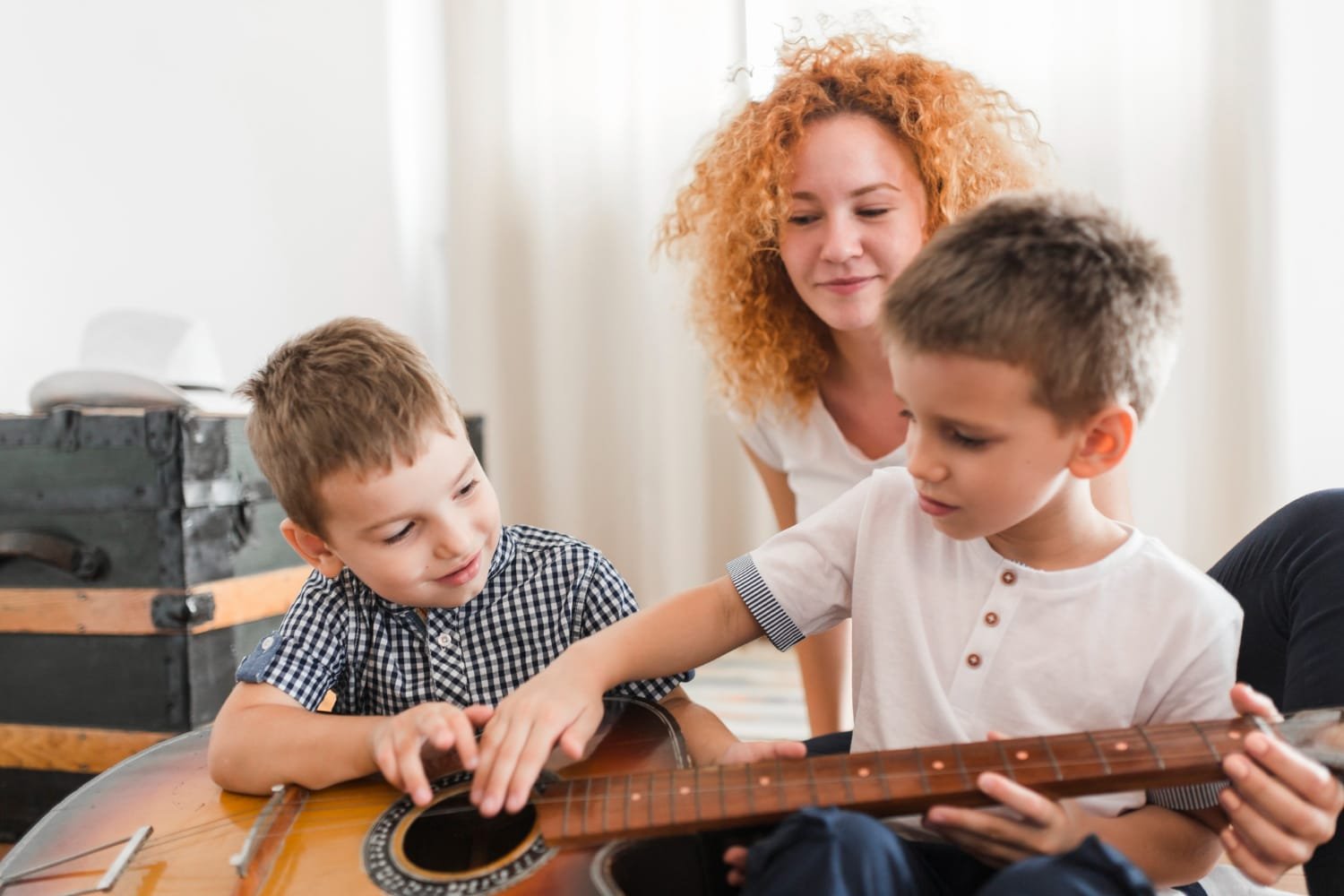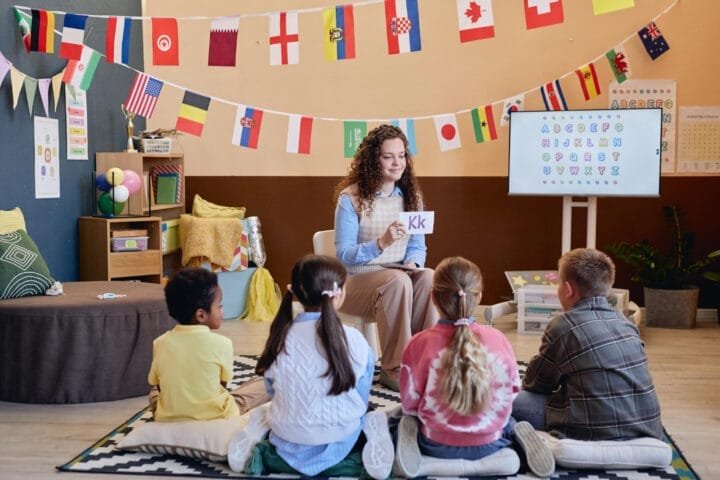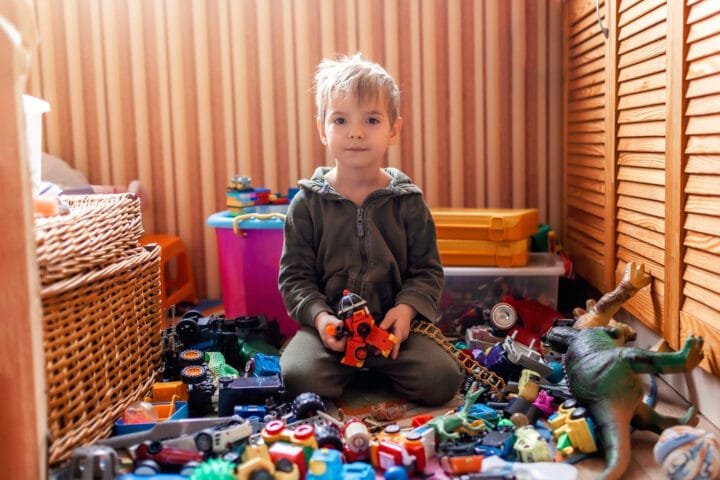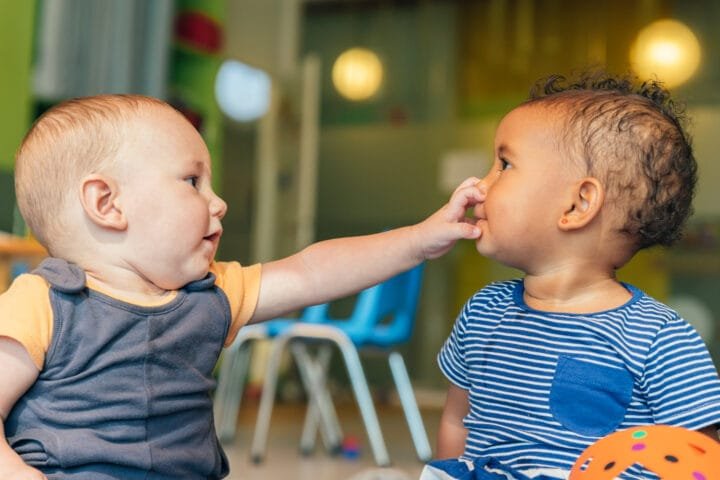Unlocking Childhood: What Are Examples of Age-Appropriate Activities for Every Stage?
Have you ever felt like you’re drowning in a sea of toys, games, and activities, unsure which ones are actually right for your child? We get it! Choosing age-appropriate activities can feel like navigating a minefield. One wrong step, and you’re facing a meltdown of epic proportions (and not the fun, playdough kind). But fear not, fellow parents! We’re here to be your trusty guides through the exciting jungle of childhood development. Get ready to discover a treasure trove of ideas that will have your kids shouting, “More, please!”
Introduction: The Importance of Age-Appropriate Play
Handing a toddler a complex puzzle is like giving a fish a bicycle – it’s just not going to work! Why? Because children’s brains and bodies develop in stages, each with unique needs and capabilities. Just like a gardener wouldn’t plant a delicate orchid in the scorching desert sun, we need to provide activities that match our children’s developmental sweet spot.
But why is play so important, anyway? It’s not just about keeping kids entertained (though that’s a definite bonus!). Play is the magical ingredient that fuels their growth in every way imaginable. Think of it as the brain’s superfood! Through play, children learn to solve problems, unleash their creativity, build relationships, and navigate their emotions. It’s the key to unlocking their full potential and setting them up for success in life.
So, what exactly are examples of age-appropriate activities? That’s the golden question, and we’re here to provide a treasure map filled with exciting ideas for every age and stage. Get ready to ditch the guesswork and embrace the joy of play!
Early Childhood (Ages 1-5): Building Foundations
Ah, the early years! This is where the magic truly begins. Watching a child develop during this time is like witnessing a tiny seed sprout and transform into a vibrant flower. But how do we nurture these little buds and help them blossom? With age-appropriate activities, of course!
Toddlers (1-3 years): Sensory Exploration and Motor Skills
Toddlers are miniature explorers on a mission to conquer the world (or at least the contents of your kitchen cupboards!). They’re driven by an insatiable curiosity and an urge to move, touch, and experience everything around them. Think of them as tiny scientists conducting experiments with every sight, sound, smell, and texture they encounter.
- Gross Motor Activities: Get those little bodies moving and grooving! Outdoor play, dancing, climbing on safe structures (goodbye, coffee table!), and even a simple game of chase around the yard can do wonders for their coordination and balance. The World Health Organization recommends that toddlers get at least 30 minutes of structured physical activity and 60 minutes of unstructured free play every single day. So, put on those comfy shoes and get ready to wiggle, jump, and explore!
- Fine Motor Activities: Time to flex those tiny finger muscles! Stacking blocks, solving simple puzzles, and finger painting all help develop those crucial pincer grasps and hand-eye coordination. Even everyday activities like tearing paper, scribbling with crayons, and playing with playdough can be valuable fine-motor workouts. These skills are essential for everything from buttoning their shirts to writing their names.
- Sensory Play: Engage those senses! Water play, sandboxes, and playdough provide endless opportunities for exploration and discovery. Let them squish, pour, mix, and create to their heart’s content. Sensory play isn’t just about having fun; it also helps develop language skills, encourages creativity, and even calms those toddler tantrums. A study published in the Journal of Occupational Therapy, Schools, & Early Intervention found that sensory play can significantly improve attention and focus in young children.
Preschoolers (3-5 years): Imagination and Socialization
Preschoolers are masters of imagination! They can transform a cardboard box into a rocket ship, a blanket into a magical castle, and a stick into a wand with the power to grant wishes. This is the age of pretend play, creativity, and blossoming social skills.
- Pretend Play: Embrace their inner drama kings and queens! Dress-up, role-playing, and creating imaginative scenarios are all the rage at this age. Playing “house,” “doctor,” or “superhero” helps them understand the world around them, develop language skills, and learn to cooperate with others. Dr. Stuart Brown, founder of the National Institute for Play, emphasizes the importance of pretend play in developing social and emotional intelligence. He says, “Pretend play is not just a frivolous activity. It’s a crucial rehearsal for real life.”
- Creative Arts: Unleash their inner Picasso! Drawing, painting, and crafts provide a wonderful outlet for self-expression. Don’t worry about the mess (embrace it!); focus on the process and the joy it brings. Research shows that engaging in creative activities can boost self-esteem and problem-solving skills in preschoolers. A study published in the journal Child Development found that children who participate in arts activities are more likely to develop advanced thinking skills and perform better academically.
- Early Learning Activities: Learning can be fun, too! Introduce simple board games, storytelling sessions, and sing-alongs to make learning an enjoyable experience. These activities lay the foundation for future academic success and help them develop essential skills like counting, letter recognition, and following instructions. A study by the National Association for the Education of Young Children (NAEYC) found that children who engage in playful learning activities have better language development, social skills, and problem-solving abilities.
Middle Childhood (Ages 6-12): Expanding Horizons
Say goodbye to the days of diapers and naptime and hello to bigger kids with bigger ideas! Middle childhood is a time of incredible intellectual and social growth. They’re eager to learn, explore, and make their mark on the world.
Early Elementary (5-8 years): Building Confidence and Skills
These young learners are like sponges, soaking up knowledge and skills at an astonishing rate. They’re ready for more complex challenges and opportunities to shine.
- Active Play and Sports: Keep them moving! Bike riding, team sports, swimming, and other physical activities are crucial for their physical development and overall well-being. Did you know that regular physical activity can improve academic performance, reduce stress, and even boost brainpower in children? A study published in the journal Pediatrics found that physically active children have larger hippocampi (the part of the brain responsible for learning and memory) than those who are sedentary. So, get those kids moving!
- STEM Exploration: Spark their curiosity about the world around them! Science experiments, building projects, and coding games introduce them to the wonders of STEM (science, technology, engineering, and mathematics). These activities foster critical thinking, problem-solving skills, and a love of learning. According to the National Science Foundation, early exposure to STEM can help children develop a strong foundation for future success in these fields.
- Creative Expression: Nurture their artistic talents! Music lessons, theater, arts and crafts provide opportunities for self-expression and creativity. These activities not only boost their confidence but also help them develop essential skills like communication, collaboration, and perseverance. A study by the Dana Foundation found that arts education can improve attention, memory, and critical thinking skills in children.
Tweens (9-12 years): Fostering Independence and Critical Thinking
Tweens are on the cusp of adolescence, navigating the exciting (and sometimes turbulent) transition from childhood to the teenage years. They crave independence, social connections, and opportunities to test their limits.
- Hobbies and Interests: Encourage them to explore their passions! Collecting, crafting, coding, sports, and other hobbies provide a sense of accomplishment and identity. These activities also help them develop valuable skills like time management, organization, and goal-setting. Research shows that having hobbies can improve self-esteem, reduce stress, and even increase academic performance in tweens.
- Social Activities: Friendships become increasingly important during the tween years. Games with friends, clubs, and group projects help them develop social skills, learn to navigate social dynamics and build strong relationships. According to the American Academy of Pediatrics, strong peer relationships are crucial for tweens’ social and emotional development.
- Problem-Solving and Challenges: Challenge their minds! Puzzles, strategy games, coding, and other brain-teasers help them develop critical thinking skills, logic, and perseverance. These activities also teach them valuable lessons about strategy, planning, and overcoming obstacles. A study published in the journal Developmental Psychology found that children who engage in problem-solving activities have better executive function skills, which are essential for planning, organizing, and achieving goals.
Adolescence (Ages 13-18): Navigating Growth and Identity
Ah, the teenage years! It was a time of self-discovery, intense emotions, and a growing sense of independence. Teenagers are figuring out who they are, what they believe in, and where they fit in the world. It’s a rollercoaster ride, but with the right support and guidance, they can navigate it successfully.
Early Teens (13-15 years): Social Connections and Self-Discovery
Social connections are everything to early teens. They’re navigating peer pressure, exploring their identities, and trying to find their place in the world.
- Peer Relationships: Support their social lives! Social gatherings, team activities, and volunteering provide opportunities to connect with peers, build friendships, and develop social skills. Did you know that strong social connections can boost self-esteem, reduce the risk of depression, and even improve academic performance in teenagers? A study published in the journal Child Development found that teenagers with strong social support are more likely to graduate from high school and attend college.
- Creative Outlets: Encourage self-expression! Music, art, writing, performance, and other creative outlets allow teenagers to explore their identities, express their emotions, and develop their talents. These activities can also provide a healthy way to cope with stress and anxiety. A study by the National Endowment for the Arts found that teenagers who participate in arts activities have higher self-esteem, better problem-solving skills, and are less likely to engage in risky behaviors.
- Exploration and Learning: Broaden their horizons! Travel, museums, cultural events, and other enriching experiences expose teenagers to new ideas, cultures, and perspectives. These experiences can spark their curiosity, inspire new passions, and help them develop a broader understanding of the world. Research shows that travel can improve creativity, critical thinking skills, and cultural awareness in teenagers.
Older Teens (16-18 years): Responsibility and Future Planning
Older teens are on the brink of adulthood, preparing for life after high school. They’re thinking about their futures, exploring career options, and taking on more responsibilities.
- Leadership and Community Involvement: Encourage them to make a difference! Volunteering, internships, mentorship programs, and other leadership opportunities help teenagers develop valuable skills, build their resumes, and contribute to their communities. These experiences also foster a sense of purpose and responsibility. A study by the Corporation for National and Community Service found that volunteering can improve academic performance, reduce risky behaviors, and increase civic engagement in teenagers.
- Academic and Career Exploration: Support their future goals! College visits, job shadowing, online courses, and career counseling can help teenagers explore their options and make informed decisions about their future paths. Research shows that early career exploration can lead to greater job satisfaction and success later in life.
- Personal Growth: Encourage self-reflection and personal development! Mindfulness practices, goal setting, journaling, and other self-improvement activities can help teenagers develop self-awareness, emotional intelligence, and resilience. A study published in the journal Mindfulness found that mindfulness practices can reduce stress, improve focus, and enhance emotional regulation in teenagers.
Activities for All Ages: Connecting and Growing Together
Family time is precious, no matter what your children’s ages are. These shared experiences create lasting memories, strengthen bonds, and provide opportunities for fun and learning.
- Family Time: Make time for each other! Game nights, movie nights, outdoor adventures, vacations, and other shared experiences create lasting memories and strengthen family bonds. Did you know that regular family meals can improve communication, reduce risky behaviors, and even boost academic performance in children and teenagers? A study by the National Center on Addiction and Substance Abuse at Columbia University found that teenagers who have frequent family dinners are less likely to use drugs and alcohol.
- Creative Projects: Unleash your collective creativity! Cooking together, DIY projects, gardening, and other creative endeavors provide opportunities for collaboration, problem-solving, and shared accomplishment. These activities also teach valuable life skills and foster a sense of teamwork. A study published in the journal Family Relations found that families who engage in creative activities together have stronger relationships and better communication skills.
- Community Involvement: Give back together! Volunteering, attending local events, and supporting causes as a family fosters a sense of community, empathy, and social responsibility. It’s a great way to teach your children about the importance of helping others and making a positive impact on the world. Research shows that volunteering can increase self-esteem, empathy, and social skills in children and teenagers.
Conclusion
Wow, we’ve covered a lot of ground! From toddlers to teens, we’ve explored a vast landscape of age-appropriate activities. Remember, the key is to provide opportunities that nurture your child’s unique needs, interests, and developmental stage.
Play is the secret ingredient to a happy, healthy childhood, so make it a priority! Engage with your children, encourage their passions, and create lasting memories together. And don’t forget to embrace the mess, the laughter, and the joy that comes with it all. After all, childhood is a fleeting adventure, so let’s make the most of it.
Now, go forth and unlock the magic of childhood with your little ones! And don’t forget to share your favorite age-appropriate activities in the comments below. We’d love to hear from you!
Recommend Books
- “Playful Learning: Develop Your Child’s Sense of Joy and Wonder” by Mariah Bruehl – This book emphasizes the importance of play in learning and provides a wealth of ideas for incorporating playful activities into your child’s life.
- “Balanced and Barefoot: How Unrestricted Outdoor Play Makes for Strong, Confident, and Capable Children” by Angela J. Hanscom – This book explores the benefits of outdoor play for children’s physical and mental development and offers practical tips for encouraging more time in nature.
- “The Art of Screen Time: How Your Family Can Balance Digital Media and Real Life” by Anya Kamenetz – This book provides a balanced perspective on screen time and offers guidance on how to manage technology use healthily.
- “Simplicity Parenting: Using the Extraordinary Power of Less to Raise Calmer, Happier, and More Secure Kids” by Kim John Payne – This book advocates for a simpler approach to parenting, emphasizing the importance of creating a calm and clutter-free environment for children.
- “Free to Learn: Why Unleashing the Instinct to Play Will Make Our Children Happier, More Self-Reliant, and Better Students for Life” by Peter Gray – This book argues that children learn best through self-directed play and explores the ways in which traditional schooling can stifle children’s natural curiosity and love of learning.
FAQs
It’s completely natural for children to gravitate towards activities they enjoy. However, introducing variety is key to supporting their development across different areas. Try gently suggesting new activities alongside their favorites. For instance, if your child loves buildings with blocks, incorporate other materials like playdough or magnetic tiles. You can also demonstrate a willingness to try new things yourself, expressing enthusiasm and curiosity about different activities. This can encourage your child to step outside their comfort zone.
The American Academy of Pediatrics provides guidelines for screen time:
- Under 18 months: Avoid screen media other than video chatting.
- 18-24 months: If you choose to introduce screen time, select high-quality programming and watch it with your child, helping them understand what they’re seeing.
- 2-5 years: Limit screen use to 1 hour per day of high-quality programs.
- Six and older: Place consistent limits on the time spent using media and the types of media. Ensure media doesn’t replace adequate sleep, physical activity, and other behaviors essential to health.
These are guidelines, so consider your child’s individual needs and create a healthy balance between screen time and other activities.
Transform everyday experiences into learning opportunities! Count objects while grocery shopping, sing the alphabet during bath time, or read stories before bed. Games are excellent learning tools, so they incorporate puzzles, board games, and educational apps into their routine. Remember, learning should be an adventure, not a chore!
Consult your child’s therapist or healthcare provider for personalized recommendations. They can offer valuable insights and suggest activities that cater to your child’s specific needs and abilities. Numerous online resources and organizations also provide information and support for families of children with special needs.
Designate a play area where your child can freely explore and create. Stock it with age-appropriate toys, games, and art supplies. Make it a comfortable and inviting space where your child feels safe expressing themselves and let their imaginations run wild. Most importantly, join in the fun! Your presence and participation can significantly contribute to a playful and enriching environment for your child.
Related Posts
